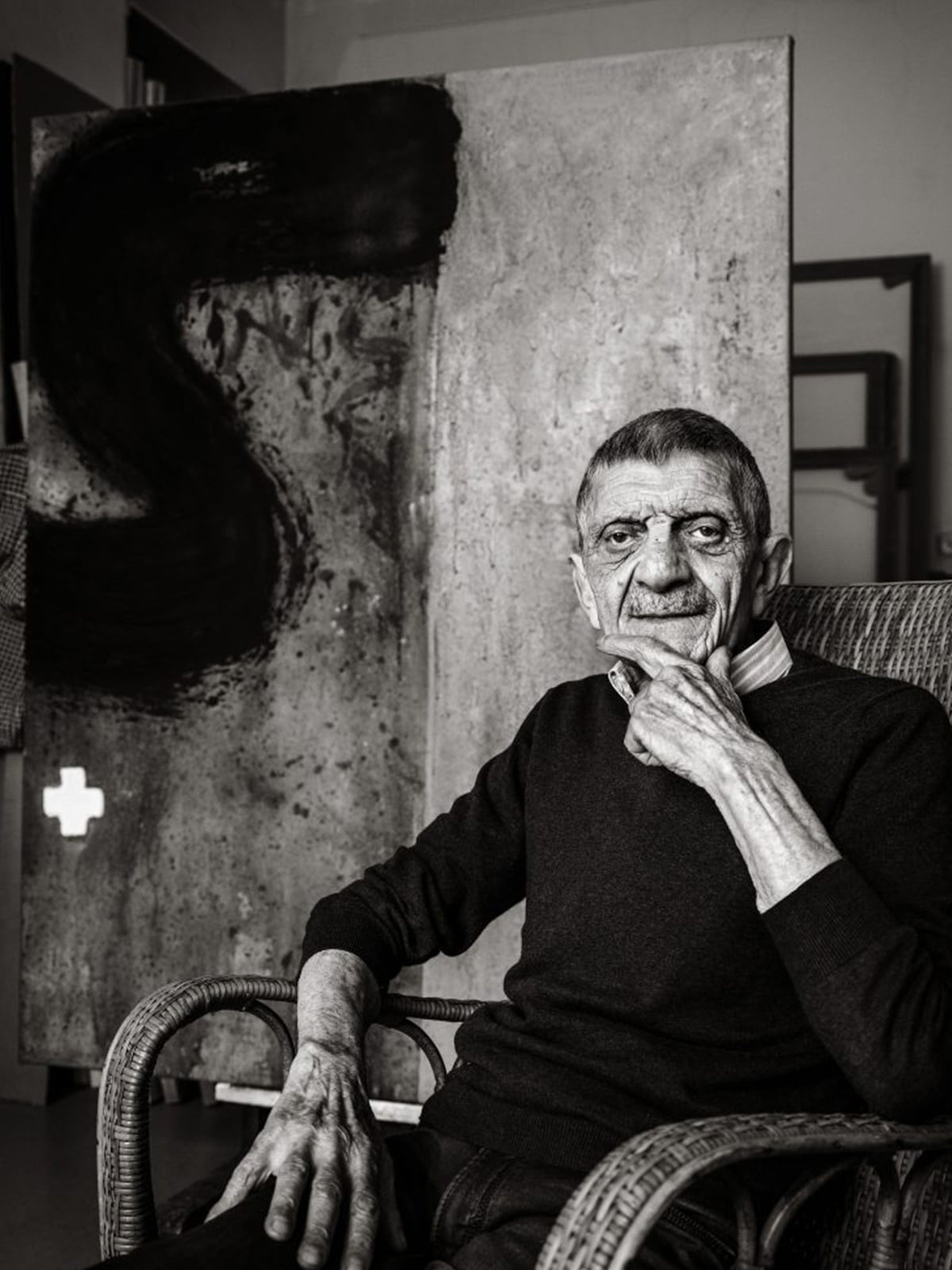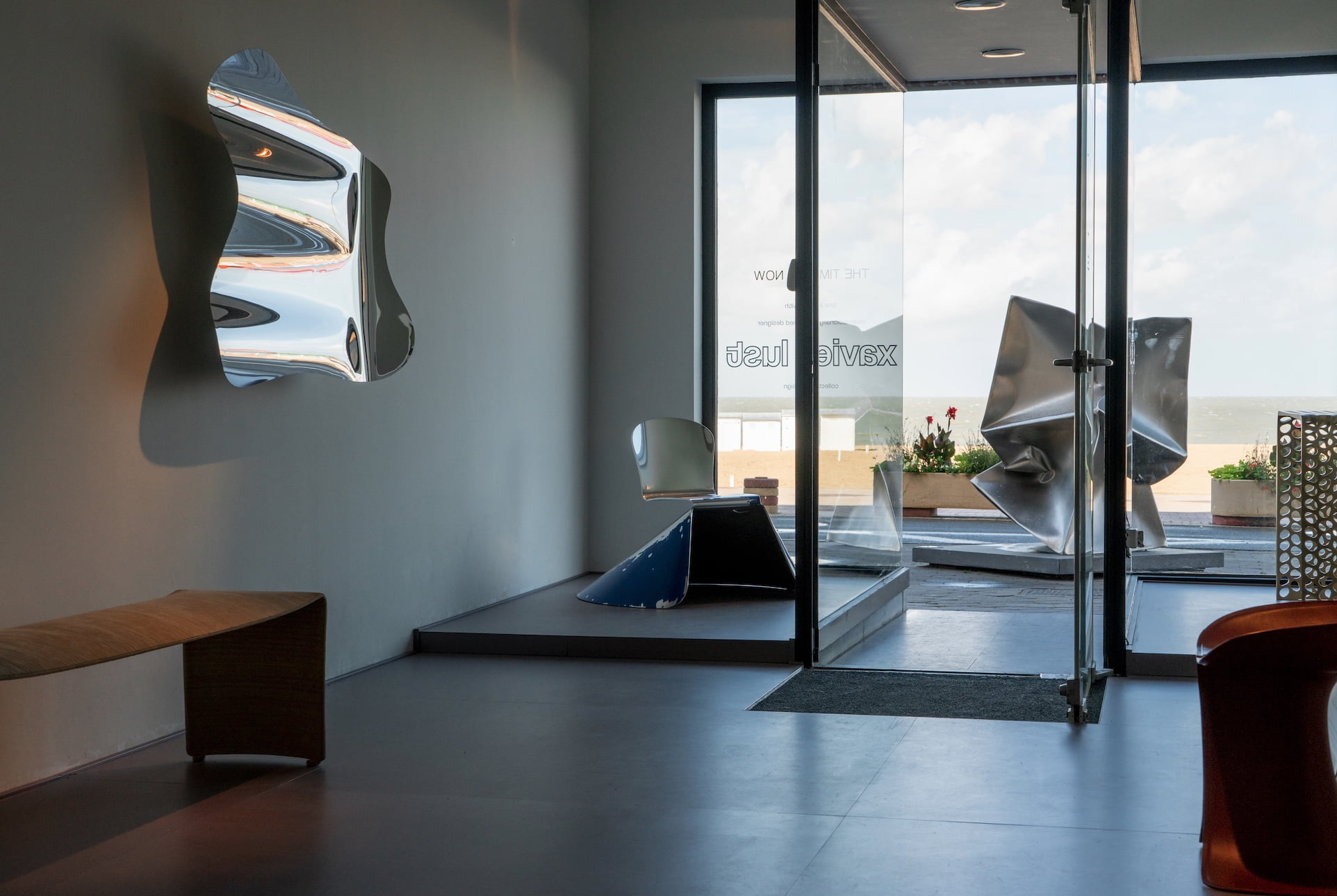
Informal art, which emerged right after World War Two, introduced some exciting new aesthetic principles. Its pioneers were, amongst others, Alberto Burri (1916-1995), who worked with jute – sometimes burned jute – Jean Dubuffet (1901-1985), who named his art packed with references to children’s drawings and works by psychiatric patients ‘art brut’, and Jackson Pollock (1912-1956), who laid down or spread out his supports on the floor and let paint drip down on them with painterly gestures. The artistic media and thought processes these artists established were subsequently expanded by artists from younger generations, one of which was the Belgian artist Luc Hoenraet (Aalst, 1941), who developed a capacity to make matter speak for itself.
Artists like Hoenraet and his somewhat older kindred spirits, such as his compatriot Bram Bogart (1921-2012) and the Spanish artist Antoni Tàpies (1923-2012) rejected the bourgeois view that art should be figurative, paying no mind to its materials’ meaning-giving dimension. They liberated the gaze from launderette-think and visual mysophobia. In their works, dead matter comes alive, what has become obsolete and has fallen into disuse gets a new lease of life, as it is used to direct attention to the substance, to the components, to the parts that ‘cause to exist’, as the existentialists (whose spirit Hoenraet regularly went to soak up in Paris) used to say. Reflection on their works takes us Jenseits von Gut und Böse (beyond good and evil) as Nietzsche never ceases to remind us.
In the self-inquiry on what art is, Hoenraet’s contribution is experimental. He grapples with the material as such. The absence of any form presupposing precise delineation – whence its designation as ‘informal’ – allows the material more wiggle room to come to the fore, leaving behind its traditional state of invisibility. An overview of Hoenraet’s oeuvre yields the clear impression of a distinctive handwriting. His thorough furrowing and grooving of the ground layer. His search for potential ways of conveying meaning to the palimpsest, the ground layer featuring marks and designs that allow glimpses an underlying layer, traces from earlier, faded designs: the layeredness of what lies beneath the surface. On top of this overly prepared ground layer, he creates a whole new work, in a manner of speaking. While the ground layer is executed with painstaking craftsmanship and precision, in his second phase of creation Hoenraet goes wild, becomes flighty, restless, like a scoundrel ‘tagging’ the wall of a public building, quickly: pointing his graffiti spray can, spraying, running. This way, a tension arises in Hoenraet’s work between the serenity of his subdued background composition and the agitation of the eye-catching scribbles on the surface. Such scratchings often take the shape of ‘hoenraet crosses’. His works do not all emanate aggression. In some of them, the scratching has been tempered with ferocious swagger. As a result of his extensive drawing experience, lines have become more airy. They tend to cross a little less often and may at times even converge into geometric angles. Whether they be savage or bringing order, hard or playful, sharp or flowing, Hoenraet’s lines break up his matter to allow the gaze to penetrate the surface.

